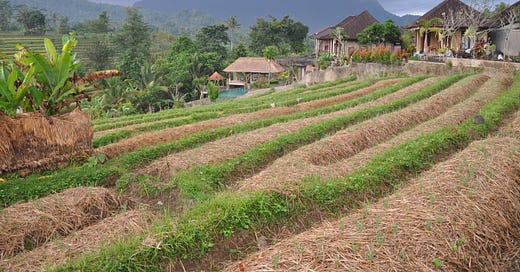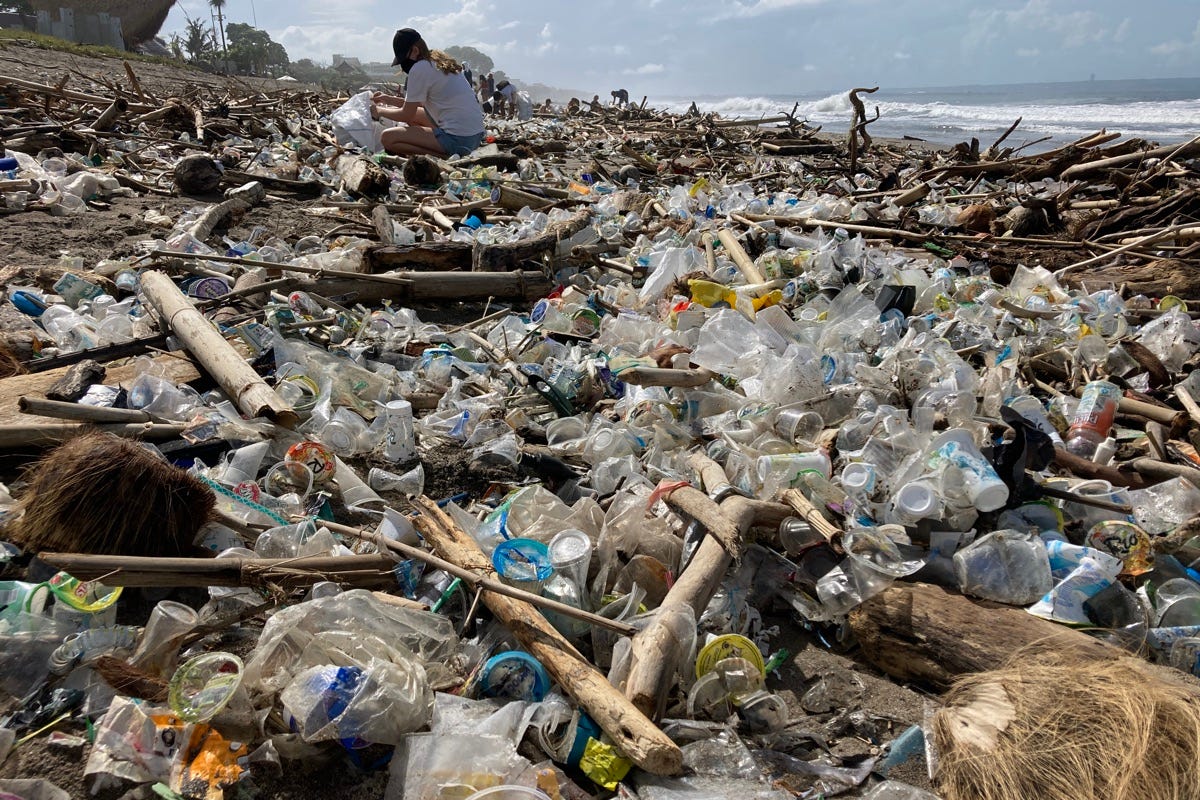Today, I’m looking at sustainable tourism and what it is. This could be a very short post as I could simply write “nobody agrees on what sustainable tourism is,” but I’ll try. While you’ll see it used with both tourists and industry in mind, at heart, it’s an industry-directed term.
I was going to go through a potted history of sustainable tourism, but thought the better of it. In summary, its roots lie in sustainable development, a term coined by the Brundtland Commission. This was then adapted for tourism. Below I’ve noted the Commission’s take along with an oft-cited view from academia. There is, by the way, no broad-based consensus on what sustainable tourism is. Don’t tell that to any tourism minister.
Brundtland, defining sustainable development, states:
“... development that meets the needs to the present generation without compromising the ability of future generations to meet their own needs.”
Tourism academic Richard W Butler builds on this to firm up something nebulous around sustainable tourism. In this 1999 paper (quoting an earlier one of his from 1993) he writes:
“... tourism which is developed and maintained in an area (community, environment) in such a manner and at such a scale that it remains viable over an infinite period and does not degrade or alter the environment (human and physical) in which it exists to such a degree that it prohibits the successful development and well being of other activities and processes.”
If you want to read one, read the latter as it is by far the more interesting. It is not paywalled, though his earlier one seems to be.
It is a bit mad when you think about it. Sustainable tourism slogans are everywhere and an army of consultants butter their bread with it. Yet, there is no broad agreement on what it actually means. Within an industry awash in greenwashing and fantasy peddling, yet another meaningless slogan feels almost normal—I’m surprised it isn’t called “nice tourism.”
Looks better pre-harvest—and pre-resort? Time for some Net-Negative. Photo: Stuart McDonald.
Only the most delusional could look at tourism’s state pre-pandemic and not feel alarm. Be it overtourism, environmental degradation, crime or cultural offensiveness, tourism has it all. Who wouldn’t want a better form of tourism? This is to say, the goal of the whole undertaking feels admirable—if only I knew what it meant. The UNWTO, always keen on meaningless terms, has declared it should be “the new normal.” How do you make something undefined the new normal?
To be fair to the UNWTO, they did come up with the catchy “people, planet and prosperity,” which summaries the premise. They also push a wish list with a colour palette—the Sustainability Development Goals—three of which hook into sustainable tourism. Neither the catchy slogan nor the SDGs pretty colours engage much with the “how”.
The SDGs: A wish list with a colour palette.
The phrase sustainable tourism has been around for over 30 years, yet a clear definition is yet to emerge. Why?
It is impossible to define, that’s why. Put aside the simple differences around geography (the where), and start with for whom. Sustainable for the resort developer or the family-run bungalow? For the community activist or the politician? For the tax-man or the environmentalist? For the traveller or the local? For the economy or the planet? Being sustainable is a balancing act. One needs to balance the needs of all the above (and a bunch of others) and hope to still make a buck.
Think about some of the ways it plays out. I’m using hotels in the examples below, but sustainable tourism is to be all-encompassing.
It is common for hotels today to stop using single use plastic. This is good for the planet, and they’d argue it is a practice supporting them being a sustainable operator. That they have one hundred private pool villas out back doesn’t enter into the equation. Sustainable tourism needs to take a holistic view—it needs to encompass all aspects of the business.
Clearly Bali needs more Banyan Trees. Batu Belig Beach, late 2021. Photo: Stuart McDonald.
Net-zero pledges almost always only concern hotel operations. “Removing” residents then carving a scar in the earth and building the joint in the first place doesn’t count. This is of course complete garbage. If a hotel wants to claim sustainability, of course its construction needs to be in the equation. Operations should not be Net-zero, they should be Net-Negative. Set a prescribed period of say ten or twenty years to negative out the build out. If that makes the project unfeasible from an economic point of view, then don’t build the bloody thing.
It isn’t all bad though—hotels also do good things. Check out this video from Banyan Tree that I had to sit through the other day for university. Make yourself a stiff drink first.
Drinks please.
In the video they state the group holds four environmental cleanings per year per property. In 2017, 33 tonnes of trash were collected. To put this in perspective, as of the end of 2021 they had 58 operating hotels (I’m not sure how many they had in 2017). So, if each of those 58 properties held four cleanups a year, that is 232 cleanups to gather roughly 33,000 kg of trash. So each cleanup gathered around 150 kg of rubbish. In comparison, Sungai Watch a small Indonesia-based NGO with 50 employees, removed 333,000 kg of trash from Bali’s rivers in 2021. Don’t get me started on Banyan Tree’s statement about their clingfilm usage: “Over 2,100 km of cling film has been reduced, almost the equivalent distance from Singapore to Manila.” Who the hell thought this statement would work well—I mean how much are they still using?!
This isn’t to say all the fault lies at the high end, and that budget guesthouses are blameless. I’ve stayed in no shortage of beach flop houses that have no water treatment, burn rubbish, exploit staff and so on. None of this is ok. That said, Jo’s Festy Beach Flop House isn’t paying Earthwatch $6,600 to get a Bronze sustainability pat on the back.
Take an enormous resort going into a pristine and remote area, one so remote there’s hardly any mains power. If the resort was serious about being sustainable, it would be renewables-driven. In this case, it isn’t. Instead it will rely on new coal-fired plants. Their propaganda? Near every second word is sustainable. When I asked them about this contradiction, they ignored me. I later heard (second hand) that they view other aspects of their project to be sustainable. I guess bamboo straws then.
None of this is good enough.
Repeat to self: The straws are bamboo. Photo: Stuart McDonald.
There are plenty of easy ways to make a tourism business “more sustainable.” There’s engaging with the local community in a mutually beneficial manner. There’s paying staff well and under good conditions. There’s not using single use plastic (or clingfilm), or low energy lightbulbs. There’s using locally supplied food and not importing goodies from the motherland. These are all steps in the right direction and plenty of hotels do these and much more. That doesn’t though, make these steps enough, and it sure doesn’t make these properties examples of sustainable tourism. And yet, go read their websites.
After all, these sort of steps should be a normal part of business—most of them will save the property money. Is it even possible to buy a high energy lightbulb anymore? Why is it noteworthy for a hotel to undertake a beach cleanup? Could the bar be lower? The planet is on fire and we’re awarding accolades for using bamboo straws. It seems a bit much.
In my view, unless applied in a holistic manner, sustainable tourism is an oxymoron. Even if one wanted to, one can’t be sustainable for everyone. One can’t equally prioritise people, planet and profit all in the same breath—it’s a fool’s errand. One can work hard to be “more sustainable,” and that’s a start—I’m just not sure it needs a round of applause.
There is only one. Photo: NASA.
If you come across a property claiming to be a sustainable tourism business, drop them a line and ask them to help you understand. Question everything they say. It shouldn’t have to be this way of course, but it is, and the industry has nobody to blame for it other than themselves.
Sustainable tourism, well, it is only half the battle. The other half? That’s responsible tourism’s paddock. I’ll be getting into that tomorrow—and I’ll try not to swear.
Other episodes in the Rethinking Tourism series:
National Chocolate Milk Day (World Tourism Day)
Nice Tourism (Sustainable Tourism)
The Benevolent Lie (Responsible Tourism)
The Year Is 2006. The Town Is Luang Prabang (Pro-poor Tourism)
Zoom in to the Red Plastic Chairs (Slow Travel)
The Petro-bourgeoisie (Flying, carbon etcetera)
Reality Check (Tour companies)
Follow the Money (Money matters)
Foundations Matter (Community Based Tourism)
Couchfish is 100 per cent independent and reader-supported. If you’re not already a subscriber, and you’d like to show your support, become a paying subscriber today for just US$7 per month—you can find out more about Couchfish here—or simply share this story with a friend.
Don’t forget, you can find the free podcasts on Apple, Pocket Casts and Spotify as well as right here on Couchfish.
















Share this post